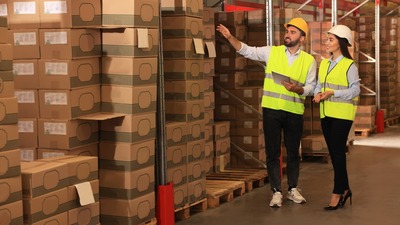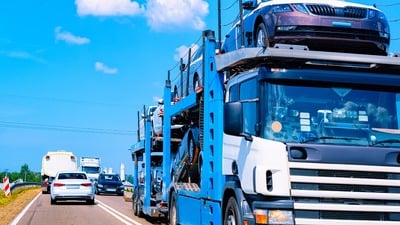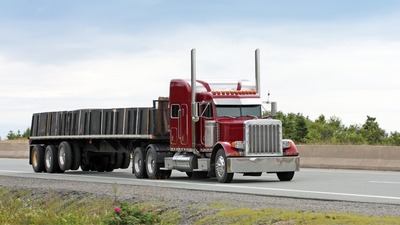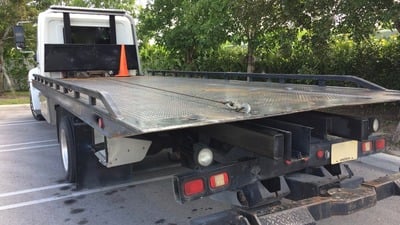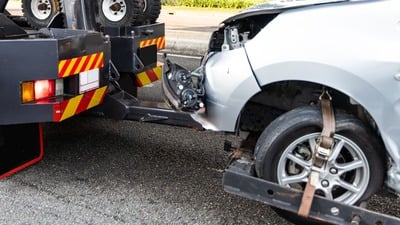Understanding Cargo Control: An Introduction
Cargo control is all about securing cargo during transport. Imagine you're driving a truck; you wouldn't want your load to move around, right? That can be dangerous. It could cause accidents, damage goods, or even hurt people. That's why we've got cargo control. It uses tools and techniques to keep everything in place, whether you're sending stuff by truck, ship, or train. It's not just safety, though. It also means following laws. Governments have rules about securing loads, and breaking them could lead to fines or worse. So, cargo control is essential for safety, obeying the law, and making sure your cargo gets where it's going in one piece.
The Importance of Proper Cargo Control
In the world of transportation, cargo control isn't just important, it's everything. Think of it as the art and science of packing, securing and transporting goods in a way that ensures they arrive at their destination undamaged. It's what runs the show on highways, in the air, on the waves, and along the railways. Without it, items we rely on every day could end up in a mess, and businesses could face hefty losses. So, why is cargo control crucial? For starters, it safeguards goods against the bumps and grinds of travel. Roads aren't just smooth ribbons of asphalt; they have got potholes, sharp curves, and steep grades. Without proper securing, cargo can shift or fall, turning pristine packages into wreckage. And it's not just about money; it's also about safety. Shifting cargo can throw a vehicle off balance, and in a worst-case scenario, cause accidents or injuries. Proper cargo control involves more than just throwing a cover over items. You need the right tools and techniques to keep cargo still. We're talking heavy-duty straps, winches, load bars, and packing methods that snugly fit items together. And it's not a one-size-fits-all deal – securing a load of lumber is worlds apart from strapping down a batch of electronics. At its core, cargo control is about precision and attention to detail. It's making sure every strap is tight, every cover is secure, and every item is in its rightful place. Do it right, and you deliver the goods. Neglect it, and you're courting chaos. So next time you see a truck on the road, remember that cargo control is what keeps those wheels turning safely and efficiently.
Various Types of Cargo Control Equipment
When it comes to securing cargo, you've got plenty of options. Each type of equipment is designed to tackle different challenges. Start with straps; they come in materials like nylon and polyester, perfect for tying down lighter loads. Then, there are chains, the heavy hitters meant to keep weighty items from moving around. Don't forget about decking and shoring beams either; they adjust to the width of your trailer to create a solid barrier. If you’re dealing with drums or barrels, drum locks are your best friends, keeping those round containers steady. And let's talk tarps—essential for keeping cargo dry and shielded from the elements. To manage any rolling or shifting, slide in some dunnage bags. These air-filled bags fill in the gaps and absorb the shock of the road. For extra stability, corner protectors shield both your straps and the cargo’s edges from wear and tear. Whether you're securing a handful of boxes or an industrial-sized load, choosing the right gear is vital for a safe haul.
How Cargo Control Ensures Safety in Transit
Cargo control is all about keeping goods secure during transport. Whether by sea, air, or road, ensuring that cargo doesn't shift, fall, or get damaged is the name of the game. When cargo is on the move, it's at the mercy of bumps, stops, and turns. Proper cargo control uses tools like straps, tie-downs, nets, and blocking and bracing materials to snuggle everything into place, reducing movement and the chance of an accident. When everything's locked down tight, it protects not just the cargo but also the people handling it from potential injuries. Plus, it avoids the extra costs and delays from damaged goods. In short, cargo control is key to getting items from point A to point B safe and sound.
Cargo Control Techniques: Best Practices
In the world of transportation, cargo control is king, because if you don't secure your load, it may lead to damage, loss, or worse. Let's get to the heart of it: the best practices for cargo control revolve around properly using the right tools and methods to keep your items safe and sound. Firstly, always choose the appropriate restraint device, like straps, chains, or load bars, based on the weight and nature of your cargo. You know the drill: heavy-duty chains for those monstrous loads, and straps for the lighter stuff. Next up, regularly inspect your equipment. It's like checking your armor before heading into battle; you gotta ensure there are no weak spots. Another tip? Balance is key. Distribute weight evenly across the platform. It's no good having one side heavy as a herd of elephants and the other light as a feather. And get this: you have to check the laws and regulations that apply to your cargo. Each item has its own set of rules, like a game, and playing by them keeps you out of trouble. Lastly, keep an eye on your cargo. A quick glance during stops can save you from nasty surprises. Even if it's all strapped down and looks snug as a bug, vibrations and movement during transit can loosen things up. Remember, in cargo control, staying vigilant is non-negotiable. By sticking to these simple guidelines, you'll safeguard your goods and your reputation. This isn't just advice; it's the blueprint to ensure your cargo stays put, no matter the bumps on the road.
The Impact of Cargo Control on Logistics Efficiency
Cargo control is crucial when it comes to logistics efficiency; it's all about securing cargo in transit. Without proper cargo control, goods can be damaged, leading to losses for companies and unhappy customers. Imagine a truck with hundreds of boxes, if they're not tied down right, a sharp turn could send things flying. So how does cargo control make everything smoother? Well, good cargo control practices help to:
- Reduce damage to goods being transported. This means the cargo arrives in top condition.
- Save time and money because when things are done right, there's no need to deal with damaged goods or returns.
- Improve safety on roads. Properly secured cargo won't shift and cause the vehicle to become unstable.
- Ensure compliance with transportation laws. The rules are strict about how cargo should be secured to prevent accidents.
Transport companies use a variety of tools for cargo control such as straps, bars, and nets. These tools need to be strong, reliable, and suited to the type of cargo. It's also key to train staff on how to use them effectively. Bottom line, better cargo control equals smoother logistics. It's the silent hero in ensuring that the stuff we order arrives as it should, safe and sound.
Legal Regulations Surrounding Cargo Control
Cargo securement is heavy business, and it's not just about safety. The law has its say too. The Department of Transportation (DOT) mandates that all cargo must be firmly immobilized or secured on or within a vehicle. The logic is simple: stuff that moves can cause accidents. Violate these laws, and you're asking for fines or worse. Specific regulations can get technical, but they usually cover how to tie things down and what kind of equipment you should use. It's not the same for every load; different cargo has different rules. Follow the DOT's guidelines, and both your cargo and everyone's safety are in check. Remember, each state can throw in their own twist on these laws, so stay sharp on local requirements. Drive safe, tie it right, and keep the highways clear of any surprises.
Training Essentials for Effective Cargo Management
Effective cargo management isn’t learned overnight. It requires understanding the right techniques and getting hands-on experience. Firstly, you need to know the types of cargo you're dealing with. Whether it's perishables, hazardous materials, or oversized items, each has its guidelines for handling. Sound knowledge of loading protocols ensures you maximize space without compromising safety. You should also be well-versed in the use of cargo control tools like straps, chains, and load bars. These tools secure your load, but only if you use them correctly. That’s where proper training comes in. Team members need regular drills in securing techniques, safety checks, and emergency procedures. Lastly, staying updated on regulatory requirements keeps you compliant with laws that govern the carriage of goods. Remember, in effective cargo management efficiency and safety go hand in hand.
Troubleshooting Common Cargo Control Issues
When things go sideways with cargo control, it's usually due to worn-out equipment, poor setup, or mishandling of materials. Look, securing cargo is no child's play; it's serious business. If the straps start to fray or chains show any sign of weakness, that's a red flag right there. Don't mess with subpar gear - replace it pronto. Now, poor setup? That's when stuff isn't rigged right. Make sure those straps and chains are tight and the load's not going anywhere. A solid setup means peace of mind down the road. And mishandling? That's on you. Follow the manual, respect weight limits, and secure your load like a pro. Anything less is asking for trouble. So, next time you're gearing up for the long haul, take a minute to check your setup - it could save you a world of hassle.
Summarizing the What, How, and Why of Cargo Control
Cargo securement is heavy business, and it's not just about safety. The law has its say too. The Department of Transportation (DOT) mandates that all cargo must be firmly immobilized or secured on or within a vehicle. The logic is simple: stuff that moves can cause accidents. Violate these laws, and you're asking for fines or worse. Specific regulations can get technical, but they usually cover how to tie things down and what kind of equipment you should use. It's not the same for every load; different cargo has different rules. Follow the DOT's guidelines, and both your cargo and everyone's safety are in check. Remember, each state can throw in their own twist on these laws, so stay sharp on local requirements. Drive safe, tie it right, and keep the highways clear of any surprises.
Training Essentials for Effective Cargo Management
Effective cargo management isn’t learned overnight. It requires understanding the right techniques and getting hands-on experience. Firstly, you need to know the types of cargo you're dealing with. Whether it's perishables, hazardous materials, or oversized items, each has its guidelines for handling. Sound knowledge of loading protocols ensures you maximize space without compromising safety. You should also be well-versed in the use of cargo control tools like straps, chains, and load bars. These tools secure your load, but only if you use them correctly. That’s where proper training comes in. Team members need regular drills in securing techniques, safety checks, and emergency procedures. Lastly, staying updated on regulatory requirements keeps you compliant with laws that govern the carriage of goods. Remember, in effective cargo management efficiency and safety go hand in hand.
Troubleshooting Common Cargo Control Issues
When things go sideways with cargo control, it's usually due to worn-out equipment, poor setup, or mishandling of materials. Look, securing cargo is no child's play; it's serious business. If the straps start to fray or chains show any sign of weakness, that's a red flag right there. Don't mess with subpar gear - replace it pronto. Now, poor setup? That's when stuff isn't rigged right. Make sure those straps and chains are tight and the load's not going anywhere. A solid setup means peace of mind down the road. And mishandling? That's on you. Follow the manual, respect weight limits, and secure your load like a pro. Anything less is asking for trouble. So, next time you're gearing up for the long haul, take a minute to check your setup - it could save you a world of hassle.
Summarizing the What, How, and Why of Cargo Control
Cargo control is all about keeping cargo secure, whether it's on a truck, a ship, or any other vehicle. It's crucial for safety and compliance with regulations. Here's the breakdown:
What? Cargo control refers to the methods and tools used to restrain and protect goods during transport. This includes straps, chains, tie-downs, and load bars.
How? You secure cargo via best practices like using the right amount of tension on straps, distributing weight evenly, and checking that everything's locked down tight before hitting the road.
Why? Two words: safety and law. Unsecured cargo can cause accidents, damage, and it's also a ticketable offense. So strap it down right, keep it safe, and steer clear of trouble with the law. Simple as that.

